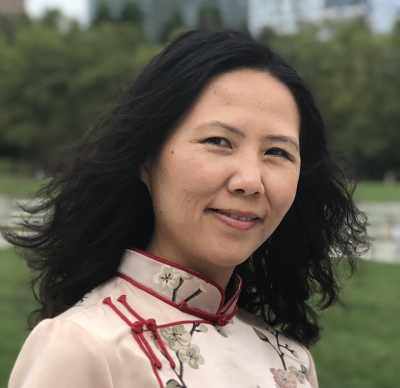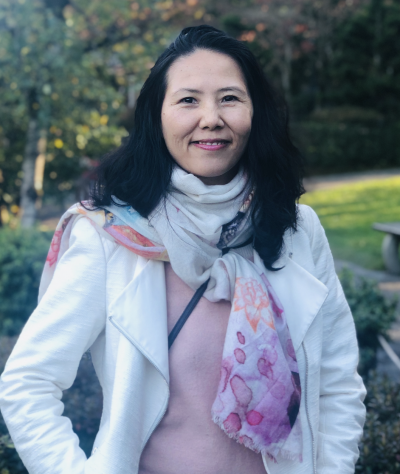Food as Medicine
By Khulan Enkhtaivan
 I am a traditional Mongolian nutritionist and a social entrepreneur. I was born in Mongolia and have witnessed how poor diets harm the Mongolians as time has passed. During my time there, I studied and worked in the business for about 10 years before finding my true calling.
I am a traditional Mongolian nutritionist and a social entrepreneur. I was born in Mongolia and have witnessed how poor diets harm the Mongolians as time has passed. During my time there, I studied and worked in the business for about 10 years before finding my true calling.
Nine years ago, in Mongolia, it was hard for me experiencing my 1-month old daughter sick with the flu due to air pollution. The health of Mongolian children was significantly impacted, with air pollution levels three to ten times higher in Ulaanbaatar’s classrooms than Mongolia’s air quality standard. After this flu, the two consecutive winters were a nightmare for me. I had visited many doctor’s offices, gave my child five medications every day, and even after finishing her treatment, she continued to cough from 2:00am to 6:00am daily.
I had seen thousands of mothers facing the same problems. Throughout the two years, my family and I kept searching for the doctors that could help my daughter and figure out what was going on. During this time, most children, due to the flu, needed hospital care for a significant period. All hospitals’ childcare departments were at full capacity, and parents had to stay overnight in the corridor. I had to do the same. It was devastating.

Then I heard of the Food as Medicine concept, so I started to educate myself about it. I used the job’s tears and kumquat powder for my daughter’s lung function and added wild yam and goji berry for her spleen function. After three weeks, it worked! That year, my daughter only went to the doctor’s office twice.
This experience led me to realize that as modern humans, we are not well educated about ancient medicine wisdom, and this wisdom may give us answers to a lot of our modern diseases. Not to mention, it is holistic and helps connect us more to nature. I started to think about why we stopped looking at foods for their functions and only think of them as protein, fat, and carbs. Foods can heal, and if we eat the wrong foods, it will create roots for disease, and the environment for the virus and bacteria to grow. From that thought, I decided to spread the “Food as Medicine” concept to the Mongolians, especially those worried mothers. And that is how Amu Nutrition became something important in my life.
I started Amu Nutrition with my childhood friend seven years ago in Mongolia and it has successfully helped a lot of people. We wanted to do more. We wanted to share these ideas with the rest of the world, so two years ago, I brought our business to the United States and now we are ready to introduce ancient nutrition wisdom to the world.
In the ancient Mongolian lifestyle, foods are chosen based on function and body type. And due to our nomadic lifestyle, we live based on natural biorhythm, seasonal biorhythm, eat based on seasons, and choose the right herbs for specific healing. During this 9-year healthy lifestyle journey, I learned that modern people eating the same food all four seasons had weakened our bodies.
In my daughter’s case, her spleen was weak because we ate rice, flours, ice cream, cold water, and raw fruits, which are foods that weaken the spleen, thus lowering the immune system. During those two years, we did not reduce spleen-harming food and only thought about attacking the flu virus. We forgot that our body is one complete system, and not just a virus attacking different parts.
In Mongolia, like other countries, modern epidemics like flu, obesity, cancer, and cardiovascular diseases are increasing. It started to increase rapidly when the Mongolians started to adopt a modern lifestyle, forgetting about their traditional ways.
My story represents many other developing countries’ stories. For a hundred years we learned from the Soviet Union, valuing modern science and a comfortable, stable lifestyle — and cultivated a modern new culture in our cities, schools, hospitals, and apartment living, using a refrigerator for the first time. In doing so, we lost our nomadic lifestyle, which depends on nature’s biorhythm and shifting mind and body seasonally.
Through this article, I am not encouraging people to go back to a nomadic lifestyle, but am encouraging people to learn from ancient wisdom and see yourself as part of nature and apply tools from ancient times. I believe there is a way to preserve our traditional, holistic, and healthy lifestyle in today’s modern world. We must remember that we are a part of nature. Even when we are living in an apartment, the moon and sun never stop creating seasons, and the seasonal changes influence our body and mind. It is the same for every human being on this earth.
If you’d like to learn about food’s function and how to use food to heal your body, click here to join our free webinar, “6 Ancient Holistic Nutrition Secrets to Better Health and Wellness.” This class will teach you the Food as Medicine approach for people who desire healthy living, weight loss, chronic disease prevention, and management. You'll learn:
- Holistic nutrition approach for the body, mind, and soul
- How to eat based on food quality instead of calories
- What to eat based on Biorhythm (daily and seasonal)
- The ancient 5 elements philosophy for healthy living
 After witnessing how poor diet was harming her fellow citizens in her native Mongolia, Khulan Enkhtaivan decided she wanted to help people live healthier lives and reduce their need for medications. She studied traditional Mongolian medicine and Western nutrition, forming Amu Nutrition with a childhood friend with the mission of improving the health of her fellow Mongolians.
After witnessing how poor diet was harming her fellow citizens in her native Mongolia, Khulan Enkhtaivan decided she wanted to help people live healthier lives and reduce their need for medications. She studied traditional Mongolian medicine and Western nutrition, forming Amu Nutrition with a childhood friend with the mission of improving the health of her fellow Mongolians.
Together, they re-introduced traditional Mongolian medicine after enduring 100 years of Soviet influence (Mongolians during that time hasd adopted a modern lifestyle) — and helped their patients improve all types of health conditions using food as medicine and employing ancient Mongolian wisdom. They opened two nutrition centers and became well known in Mongolia, even being highlighted on Bloomberg TV in Mongolia. After finding success in their home country, they set their sights on the West, expanding into the U.S.
Catalyst is produced by The Shift Network to feature inspiring stories and provide information to help shift consciousness and take practical action. To receive Catalyst twice a month, sign up here.
This article appears in: 2020 Catalyst, Issue 19: Plant Medicine for Modern Epidemics Summit



